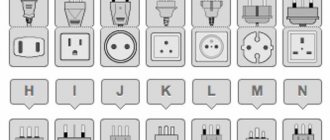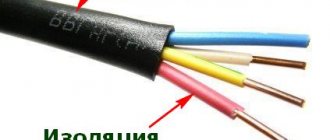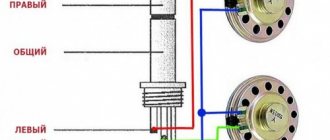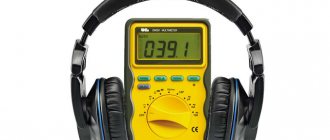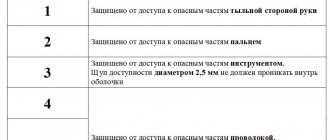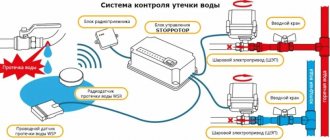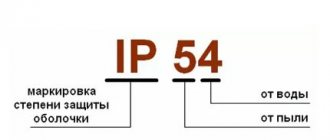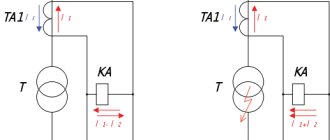A heavy rainfall can ruin your smartphone after just one short conversation. Another model retains functionality after prolonged immersion in water. In the second example, the manufacturer provided ipx7 protection, which is indicated in the accompanying documentation. This specific designation indicates the durability and safety of electrical devices when used in adverse conditions.
In order not to damage equipment due to careless handling, you need to clarify the level of protection
Classification of degrees of protection
Manufacturers may apply their own standards and testing programs to create products with improved or special technical characteristics. However, it will rarely be necessary to maintain functionality under excessive pressure at great depths or resistance to aggressive chemical compounds. For extreme conditions, specialized methods are used to prevent damage.
As a rule, it is enough to prevent mechanical contaminants and water from penetrating into the housing. The international standard IP (Ingress Protection) was created on these principles. The numbers given after the letter abbreviation confirm the product’s compliance with a certain level of protection.
For your information. Having determined the classification system, they clarify the permissibility of installing a switch, lamp or other device in the open air. The IPX4 protection class, for example, prevents drops from penetrating into the housing from any direction.
What does the first digit in the IPXX marking mean?
This position shows protection from dust, sand, larger mechanical contaminants and solid objects. The first number can be used to decipher safety for humans. With one, the maximum dimensions of the holes in the housing do not exceed 5 cm, which prevents accidental or intentional hand contact with live internal components. Further classification is made by decreasing the corresponding dimensions (mm):
- 2 – 12,5;
- 3 – 2,5;
- 4 – 1;
- 5 (6) – partial (complete) barrier to dust penetration.
Compliance with standards is confirmed by test results. To test the highest degrees of protection, talc powder (cement, coal) with a standardized concentration of contaminants in the working volume is used.
Decoding the second digit in the IPXX marking
This part of the code characterizes water resistance. Numbers from 1 to 6 indicate protection when exposed to drops or jets. The highest levels (7-9) correspond to a certain level of tightness.
In this case we are talking about a liquid, therefore, if a certain standard is met, it is implied that the penetration of foreign solid objects is impossible. For this reason, the third position of the code is sometimes replaced with the Latin letter “X”. If "ipx4" is indicated, it means that splash protection is provided from all directions. It is clear that in this design, the smallest particles of talc are unable to get inside the housing.
Additional letters
Using two special symbols, test conditions and other significant features are clarified. The first letter indicates the prevention of penetration into the protected area:
- hand – A;
- finger – B;
- tool (test probe diameter 3.5 mm) – C;
- wire (1 mm) – D.
The last letter must be deciphered as follows:
- H – the product is designed to work with high voltage;
- M (S) – moisture protection tests according to the ipx standard were performed in operating mode (with the mechanical functional units in a stationary position);
- W is an outdated designation used to indicate adaptability to bad weather conditions (specialized GOST standards are currently used).
What is IPX?
The designations IP, IPX and IPXY are used to define a rating that shows how well a device is protected from small particles and liquids that can harm the inside of the device. Officially, “IP” stands for “International Protection”, as this standard was created by the International Electrotechnical Commission (IEC). Despite this, the abbreviation “IP” is more often deciphered as “Ingress Protection” (translated from English - “Protection from external influences”). The numbers following the letters indicate the degree and type of protection.
“X” is responsible for dust protection: a number from 0 to 6 indicates the degree of protection. The zero degree does not provide any protection at all, and the sixth degree is the highest (dust will not get inside even with prolonged exposure). Most consumer-grade devices do not provide any protection against dust at all (it is assumed that people do not need it), so this indicator is often left untouched. In other words, we just see "X" after "IP". For example, an IPX5 rating means that the device does not have any tested level of protection against dust or large particles.
Now about the value of "Y".
If you already understand that the best protection against water and dust is IP68, then you have already figured out something. Congratulations, the first stage of decryption has been completed! However, there is a very large gap between the conditional IP00 and IP86, so let’s try to look at specific examples. Let's focus on water protection. By the way, the fifth and sixth levels of dust protection mean approximately the same thing: the fifth degree assumes that dust can get inside the device, but this will not affect operation in any way; The sixth degree guarantees complete protection against dust penetration.
Degrees of protection against moisture
Types of protection for sockets
For ordinary consumers, under normal operating conditions, preventing water from entering electronic devices is of greater importance. Below are detailed data on the ipx4 level, the degree of protection, and an explanation of other categories. The list highlights the features of test procedures that confirm resistance to certain types of external influences:
- 1 – fall of water drops (vertical);
- 2 – similar conditions with a body deviation of 15 degrees;
- 3 – increasing the impact angle to 60 degrees;
- 4 – a special device is used to check the resistance of the protective shell to splashes from all sides;
- 5 (6) – water jets are supplied from different directions (increased pressure);
- 7 (8) – tightness is maintained during short-term (long-term) immersion in water;
- 9 – provides protection functions when exposed to jets of hot water under high pressure.
Tests for compliance with standards are performed in a special chamber
Does IPX8 mean waterproof?
No. The term "waterproof" has little to do with reality. A truly waterproof device does not allow water to enter at all under any circumstances. This happens extremely rarely. The mentioned IPX8 rating ensures the device's functionality after accidental or acceptable contact with water, but this does not mean that the gadget must be constantly used underwater.
In fact, if you come across waterproof gadgets (watches, for example) with the appropriate markings, then there is still no 100% guarantee that the item will survive being submerged in water. If the specifications don't say anything, then the product you purchased most likely hasn't been individually tested. Manufacturers test only one new unit, and all other devices of the same configuration receive markings indicating water resistance.
If you need a device that is designed for underwater use and diving, then you should pay attention to specialized products with an ISO 6425 rating. Watches with this protection are individually tested and must withstand immersion 25% deeper than stated in the marking. In addition, such watches can be used underwater repeatedly for long periods. Pressure changes during dives and ascents should not affect the operation of the device.
Phones with increased moisture protection
IP68 - concept and explanation of protection degree markings
From the above data it is clear that for ipx4 the degree of protection ensures no damage even in heavy rain. However, you cannot swim with such a smartphone, since water can penetrate inside the case even at ipx5 or ipx6.
The required level of tightness starts with ipx7. According to the current standard, tests are performed using the following conditions:
- complete immersion of the product to a depth of up to one meter (along the bottom edge);
- procedure duration – 30 minutes;
- the temperatures of the liquid (sample) differ by no more than 5°C.
It should be emphasized that there are no precise standards for ipx8 (9). Improved security is expected. However, these categories are tested using specially approved methods. Of course, the eighth level cannot be worse than the seventh. However, data on the maximum depth and duration of exposure are not established in the current standard.
Examples of modern smartphones with improved moisture protection ( IP 68):
- Samsung Galaxy A8 (A9);
- LG G7 ThinQ;
- CAT S30;
- Huawei P20 (Pro version).
Ways to achieve increased moisture protection
Despite compliance with certain standards, attention should be paid to the manufacturers' instructions. Thus, the well-known manufacturer Apple creates new models of smartphones with IP 67 protection. However, the accompanying documentation states that there is no warranty if damage is caused by contact with water. Separately mentioned is the possibility of deterioration of tightness due to natural wear and tear.
iPhone 8 offers IP 67 protection
To prevent moisture from entering, special (enlarged and duplicated) sealing gaskets are installed. Some manufacturers equip their products with removable connector covers. Non-separable structures are created using sealed adhesive joints. A fashionable trend is the elimination of the standard 3.5 mm audio output. This solution encourages the purchase of wireless headphones while eliminating the path of water penetration.
How to check the level of protection of headphones?
The dust and moisture protection class of the headphones can be found in the technical specifications listed in the accompanying documentation. If there are no documents, then all the characteristics of the headphones can be found on the Internet.
Note! If the IP rating cannot be found, the product is not officially waterproof and dustproof. Regular exposure can damage the headphones.
It is recommended to check the level of protection of the headphones before playing sports in them. A person sweats, and the parts of the device are exposed to it, and dust accumulates more actively on the surface.
Do you need IPXX protection?
Improved tightness is needed not only when placing equipment in an open space or in a room with high humidity. Even a small amount of water provokes short circuits and activates corrosion processes. The formation of oxides disrupts the performance of contact groups.
The example of smartphones shows the risks that arise during normal use. If you accidentally drop an ordinary gadget into a full sink, you can ruin your expensive equipment. In some situations, restoring functionality in a specialized service center is not economically feasible. After purchasing a protected model, such troubles (significant costs) will be eliminated.


